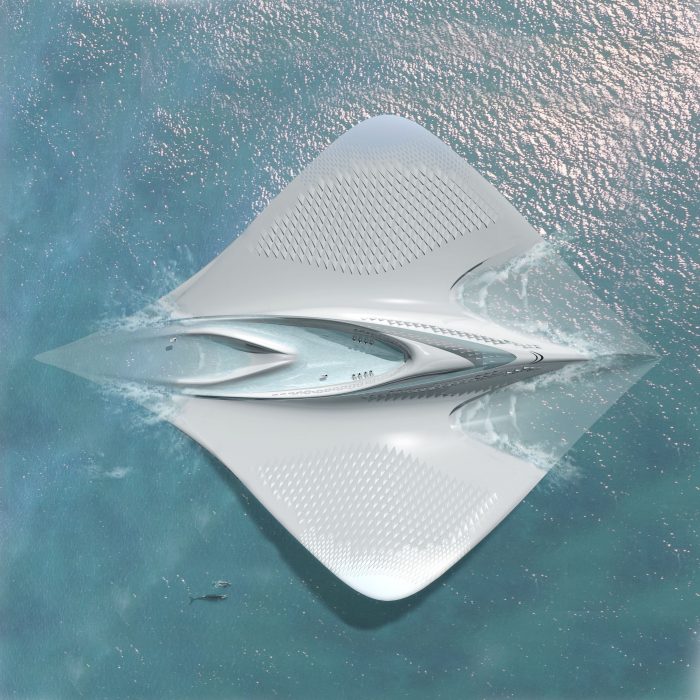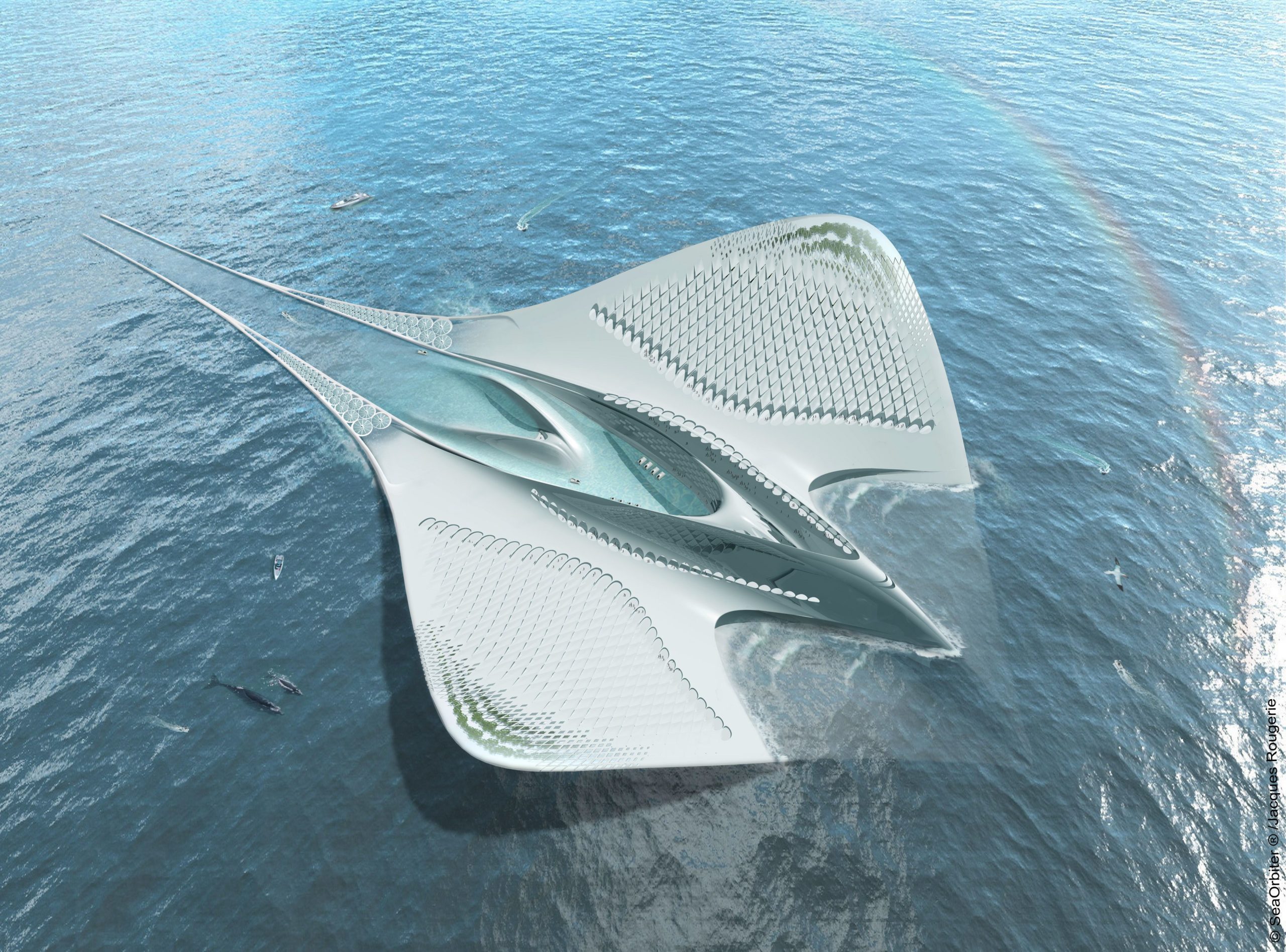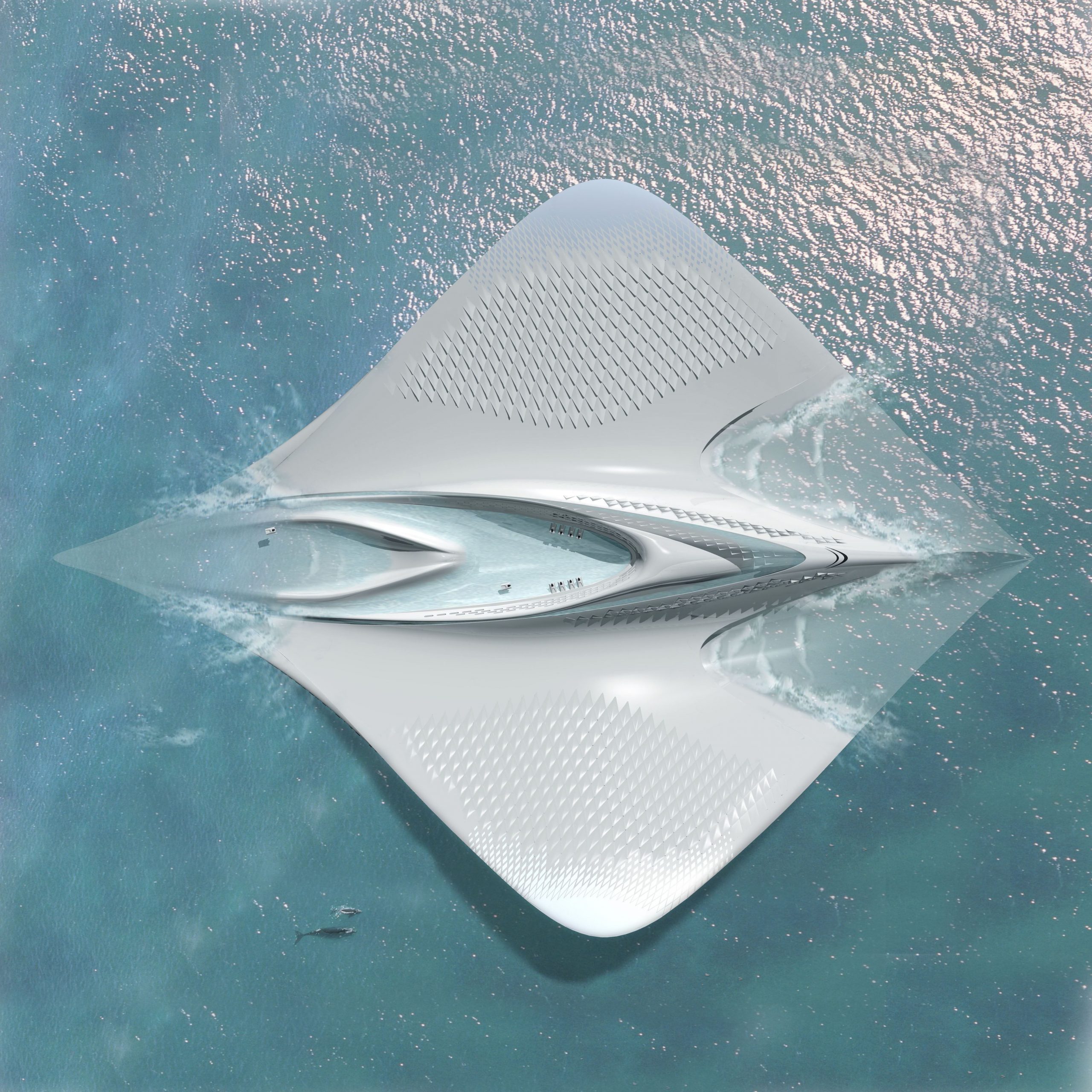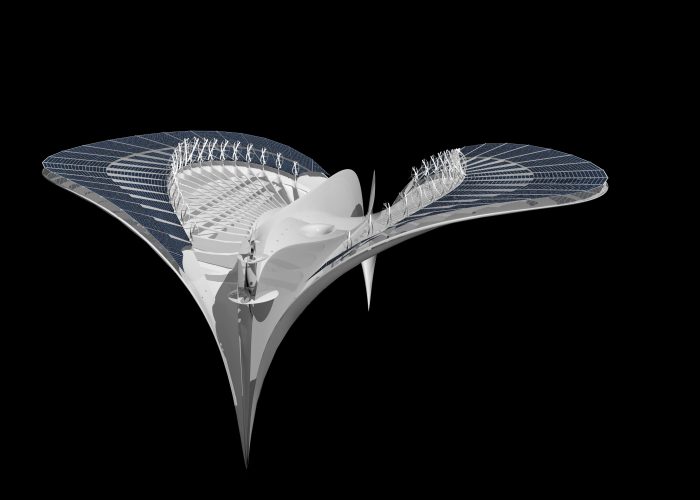City of Mariens Research Center
It swims and is often compared with a cloak. It lives under water and is a close relative to sharks. It is a Fish, a Manta-Ray to be specific. And now there is an entire bionic city shaped like it. What is this city, you wonder?
Well, it is a gigantic one for starters. It is completely self-sustaining, has a zero-waste program and runs on marine energy. It is a university-city, floating religiously in water and at some point becoming one with the marine world. To experience first-hand the biodiversity of the ocean and to live amidst it, all you have to do to is be a “Merien”, a term Jacques Rougerie, the highbrow behind this idea, which is now close to realization, often uses to label people like himself.
 “I feel very, very good underwater. I feel different. Another type of imagination is awakened in me as soon as I am underwater,” is what Rougerie means by a ‘Merien’ or ‘one belonging to the sea’.
“I feel very, very good underwater. I feel different. Another type of imagination is awakened in me as soon as I am underwater,” is what Rougerie means by a ‘Merien’ or ‘one belonging to the sea’.
The ‘ City of Meriens Research Center ’, one could say, has been his life-long dream. For someone who has been an avid Jules Verne reader, it is not hard to understand his love for the ocean and his efforts in the direction of aiding research and study of marine life. Indeed, he admitted to fantasizing about a roving research facility such as this, populated solely by like-minded individuals and having a common love for the sea.
His design is audacious and brilliant in terms of being not only dedicated to oceanic life but also because of it costing less to the environment. Rougerie has had a history and a name for often creating aquatic designs. His SeaOrbiter, another one of the marine research projects is all set to become real and would be visiting the city of Meriens.
The City in question has been designed to host a large number of researchers, scientists, professors and students all around the world for long durations. It is a futuristic design all in all and is to work right alongside the SeaOrbiter’s network of sentinels, following their multi-disciplinary programs in 2050.
 In it would be a lagoon which would act as a parking space for the SeaOrbiters, research vessels, and also as a point of departure for marine, submarine vehicles and air navigation devices. On both sides of the interior lagoon’s access channels, would be aquaculture breeding farms for selective breeding of marine life forms. At the end of the wings are hydroponic greenhouses, that is, growing plants without soil and using inert substances instead, to hold the roots.
In it would be a lagoon which would act as a parking space for the SeaOrbiters, research vessels, and also as a point of departure for marine, submarine vehicles and air navigation devices. On both sides of the interior lagoon’s access channels, would be aquaculture breeding farms for selective breeding of marine life forms. At the end of the wings are hydroponic greenhouses, that is, growing plants without soil and using inert substances instead, to hold the roots.
The whole city is supposed to be 900 meters long and 500 meters wide, with a height of 60 meters. It has been arranged into several levels which house spaces for conducting lectures, classes, laboratories, leisure and cultural zones, sports arena, etc. it can accommodate around 7000 people in one go.
There have been a plethora of underwater inventions including underwater habitats, but this one is unique in its own respect and the first of its kind.
Jacques Rougerie Architecture







